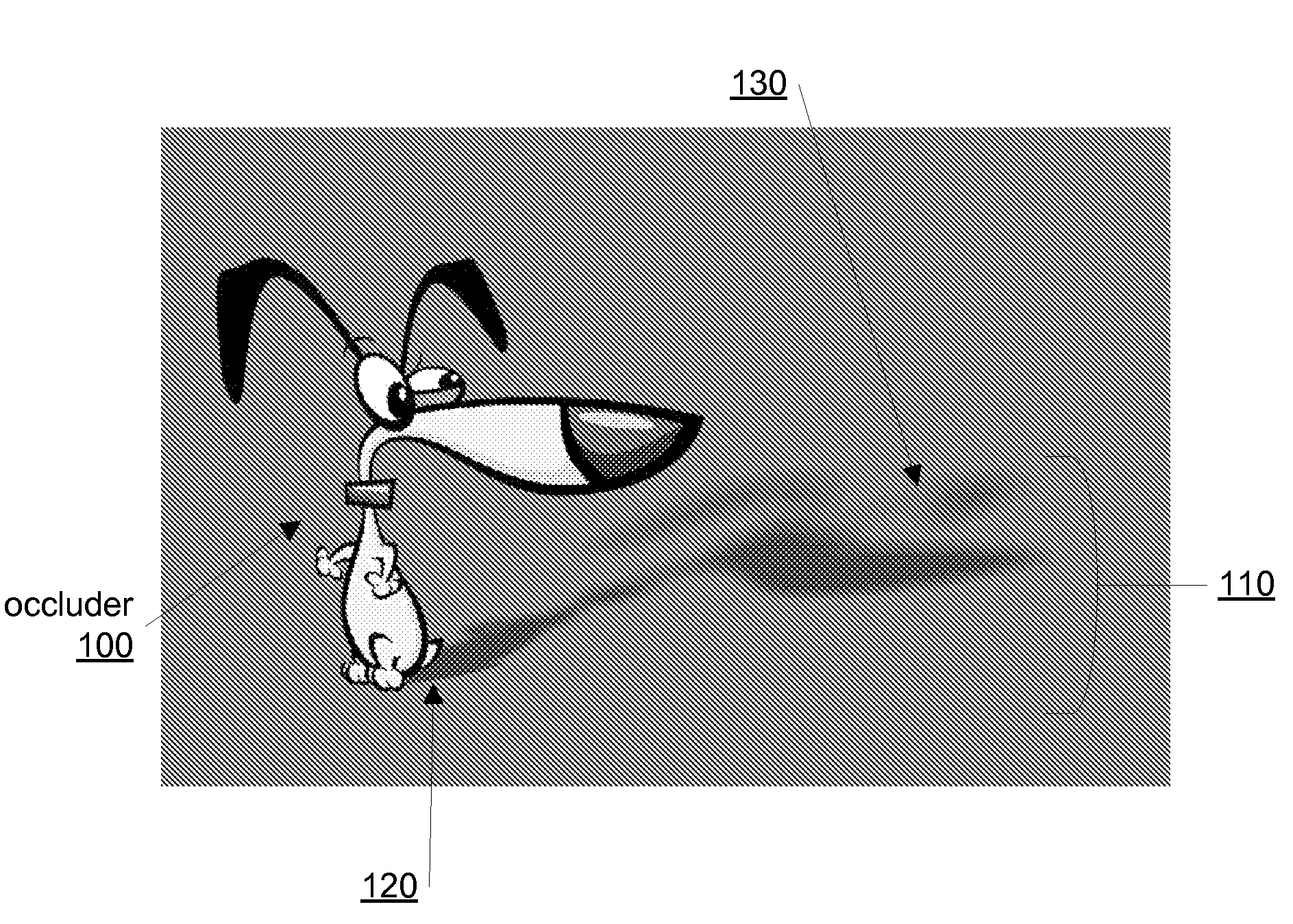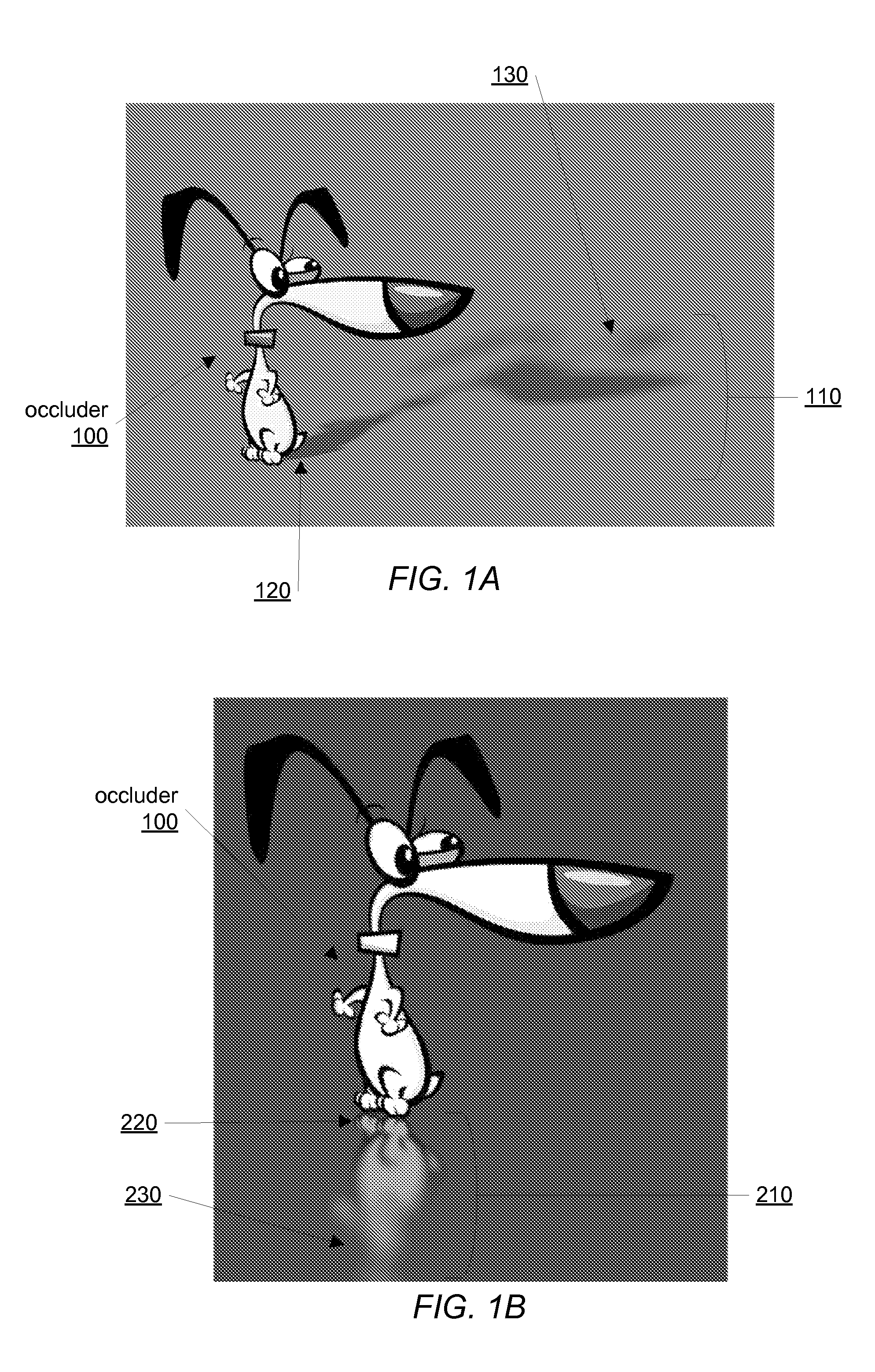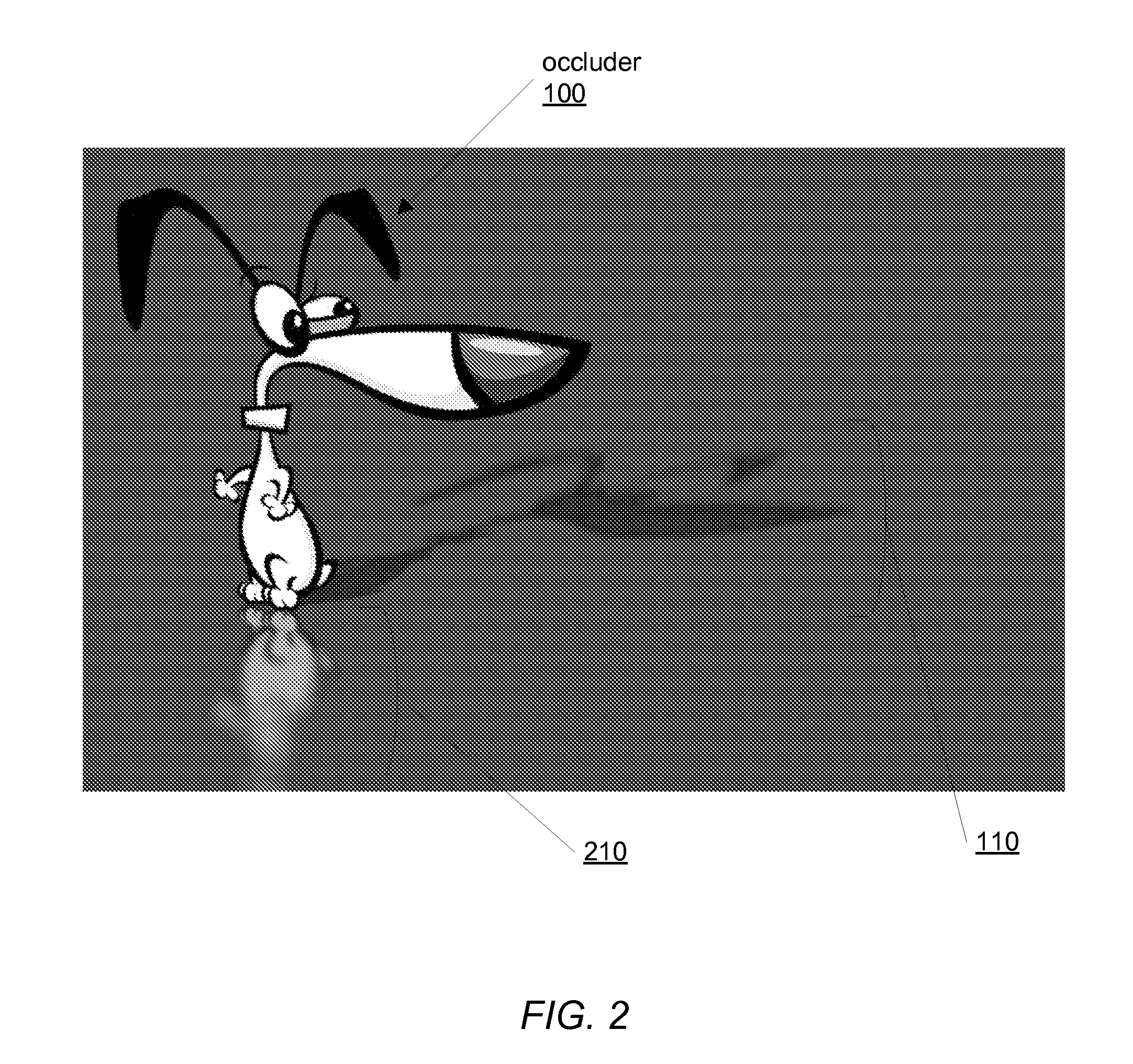Spatially-Varying Convolutions for Rendering Soft Shadow Effects
a convolution and soft shadow technology, applied in the field of computer systems, can solve the problems of hard shadows, soft shadows cast by area light sources, glossy reflections are not uniformly clear, and shadows that are realisti
- Summary
- Abstract
- Description
- Claims
- Application Information
AI Technical Summary
Benefits of technology
Problems solved by technology
Method used
Image
Examples
Embodiment Construction
[0028]As noted above, efficient techniques to compute soft shadows and glossy reflections of planar texture and transparency mapped polygons (such as the use of image pyramids and spatially-varying separable filters) can be used for advanced 2.5D or 3D graphical effects. According to one embodiment, these techniques generalize to spatially varying blur as would occur from an area light source—as well as glossy reflections.
[0029]For graphic design and other purposes, it may be required or appealing to cast shadows from single transparency-mapped surfaces onto other surfaces, especially ground planes or floors. In general, three objects are required for a shadow to be cast: a light source, a shadow caster and a shadow acceptor. A shadow caster or occluder may represent a plane (or, in some embodiments, an object) that occludes light from reaching a surface (or another plane) and therefore casts a shadow. A shadow acceptor or receiver may represent a plane that is shadowed by one or mo...
PUM
 Login to View More
Login to View More Abstract
Description
Claims
Application Information
 Login to View More
Login to View More - R&D
- Intellectual Property
- Life Sciences
- Materials
- Tech Scout
- Unparalleled Data Quality
- Higher Quality Content
- 60% Fewer Hallucinations
Browse by: Latest US Patents, China's latest patents, Technical Efficacy Thesaurus, Application Domain, Technology Topic, Popular Technical Reports.
© 2025 PatSnap. All rights reserved.Legal|Privacy policy|Modern Slavery Act Transparency Statement|Sitemap|About US| Contact US: help@patsnap.com



